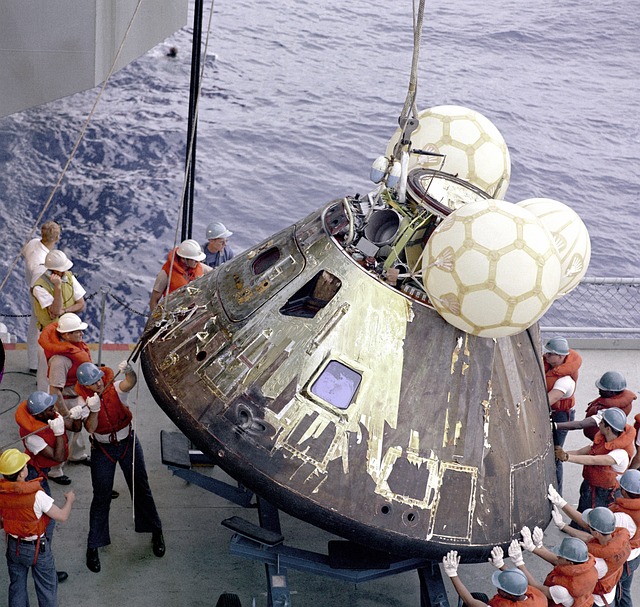When a vehicle is deemed a total loss and acquires a salvage title, its journey back to the road isn’t straightforward. The process of converting a salvage title to a rebuilt title is meticulous and essential for ensuring the safety and roadworthiness of the vehicle. This article demystifies the salvage title transfer procedure, from the initial comprehensive inspection to the final registration step that clears the way for your once-totaled car to hit the asphalt again. We’ll explore the intricacies of rebuilt title insurance, car title laws by state, and the costs associated with clearing a salvage title and rebuilding totaled vehicles. Additionally, we’ll delve into the impact of car title branding laws on resale value. Whether you’re an enthusiast or a casual driver, understanding these steps is crucial for legally and safely returning your vehicle to the road.
- Understanding Salvage Title and Rebuilt Title Designations
- The Step-by-Step Process for Salvage Title Transfer
- Comprehensive Salvage Vehicle Inspection: Ensuring Vehicle Integrity
- Documentation Necessary for Rebuilt Title Application
- Navigating State-Specific Requirements in Salvage Title Conversion
- Cost Implications of Clearing a Salvage Title and Rebuilding Totaled Vehicles
- Post-Rebuild Registration and Impact on Resale Value and Title Branding Laws
Understanding Salvage Title and Rebuilt Title Designations

When a vehicle is deemed a total loss by an insurance company due to damage that exceeds a certain percentage of its value, it is branded with a salvage title. This designation indicates that the car has been involved in an incident severe enough to necessitate extensive repairs or is beyond economical repair. The process of transferring a salvage title typically involves the insurance company acquiring the title from the state after settling a claim. For those looking to restore such a vehicle, understanding the implications of a salvage title is crucial. The journey from a salvage title to a rebuilt title begins with a meticulous inspection process that assesses the extent of damage and confirms the integrity of the repairs made. This step is non-negotiable for ensuring the vehicle’s safety and compliance with car title laws by state, which vary across jurisdictions.
Owners aiming to convert a salvage title to a rebuilt title must engage in a detailed documentation process. This includes submitting an application for a rebuilt title through the Department of Motor Vehicles (DMV), along with evidence of all repairs and parts used during the totaled car title repair. Rebuiled title insurance often covers the costs associated with this conversion, including any required inspections. The documentation must be comprehensive, as it not only demonstrates that the vehicle has been rebuilt but also provides transparency on the salvage title conversion cost and the processes followed to adhere to car title branding laws. Once a rebuilt title is issued, the vehicle can undergo re-registration, which is mandatory for legal road use. It’s important to note that rebuilt vehicles may still carry a stigma in terms of resale value due to their salvage history, which can affect both insurance rates and marketability. Potential buyers should be aware that while the vehicle is legally roadworthy after the conversion, its previous salvage status should be disclosed, as it influences the car’s overall value and future title transfers.
The Step-by-Step Process for Salvage Title Transfer

To convert a salvage title into a rebuilt title, vehicle owners must embark on a meticulous process mandated by state car title laws. The initial phase involves a detailed inspection of the salvage vehicle to assess the extent of damage and authenticate the repairs made. This inspection ensures that the automobile has been adequately restored to a safe condition. Owners are required to compile comprehensive documentation, demonstrating the nature and quality of the repairs, including all new parts used in the process. This evidence must be presented alongside an application for a rebuilt title with the local Department of Motor Vehicles (DMV). The specific requirements for this process can differ significantly from one state to another, so adherence to local regulations is imperative.
Once the necessary paperwork is submitted and the vehicle passes inspection, vehicle owners may proceed with re-registration. This step officially clears the salvage title and allows the car to be legally operated on public roads again. The cost associated with the salvage title transfer, including any fees for inspections, applications, and registration, should be considered in advance. It’s also prudent to secure rebuilt title insurance to safeguard against potential future issues that might affect the vehicle’s resale value or operation. Car title branding laws vary by state, and understanding these can help ensure that all legal stipulations are met during this process. By following these steps diligently, owners can successfully transform a salvaged, totaled car into a reliable vehicle with a rebuilt title, ready for safe use and potential resale.
Comprehensive Salvage Vehicle Inspection: Ensuring Vehicle Integrity

When a vehicle is deemed a total loss and assigned a salvage title, it can undergo the process of salvage title transfer to be repaired and returned to the road. This journey begins with a comprehensive salvage vehicle inspection, a critical step in ensuring the vehicle’s integrity post-repair. The inspection is meticulous, assessing the full extent of damage incurred and verifying that all repairs have been executed according to stringent standards. This process is not just about adhering to car title branding laws or salvage title conversion cost considerations; it’s an indispensable measure for public safety and legal compliance. The inspector will scrutinize the vehicle, checking for proper parts used in repairs, aligning with the requirements set forth by rebuilt title insurance underwriters. Only when the vehicle passes this inspection can the owner proceed to the next stage of the process: submitting a rebuilt title application to the Department of Motor Vehicles (DMV) in their respective state. This application must be comprehensive, detailing every aspect of the repairs and the parts used, as dictated by the car title laws by state. The documentation not only supports the claim that the vehicle has been restored but also ensures that it meets the safety standards required for legal operation on public roads. Upon successful transfer of the salvage title to a rebuilt title, owners can then proceed with the re-registration process, which finalizes their ability to legally drive their rebuilt totaled vehicles once more. It’s important for owners to be aware that the resale value of a vehicle with a rebuilt title will often be lower than that of a vehicle with a clean title, reflecting its history and the additional scrutiny it underwent during the salvage title resale process. Prospective buyers should be informed of this to ensure they understand the vehicle’s background and the efforts made to restore it to safe, roadworthy condition.
Documentation Necessary for Rebuilt Title Application

When pursuing a rebuilt title for a vehicle that was once designated as salvage, it is crucial to gather all necessary documentation to facilitate the transfer. The salvage title transfer process begins with a detailed inspection report that certifies the condition of the vehicle post-repairs and attests to its roadworthiness. This report, often provided by a state-certified inspector, serves as evidence that the vehicle has been restored according to stringent safety standards. Alongside this report, prospective owners must compile comprehensive documentation for their rebuilt title application. This typically includes proof of ownership, such as the original title or a bill of sale, a completed application form specific to the state’s DMV, and detailed records of all repairs undertaken. These records should be meticulous and include receipts, photographs, and part manifests to demonstrate the authenticity and quality of the work performed during the totaled car title repair process.
Rebuilt title insurance is an optional but advisable step for individuals seeking to transfer a salvage title to a rebuilt title. This insurance provides peace of mind by covering potential issues that may arise from the vehicle’s previous salvage status. Additionally, understanding and adhering to car title laws by state is essential, as each jurisdiction has its own set of regulations regarding the conversion process, including the salvage title conversion cost. These laws dictate the specifications for repair work, the types of parts that can be used, and the procedures necessary to clear a salvage title. Once all documentation is submitted, and assuming the application meets all requirements, the state’s DMV will issue a rebuilt title. With this title in hand, vehicle owners can proceed with re-registration, ensuring their rebuilt vehicle complies with car title branding laws and is legally drivable. It’s important to note that the resale value of salvage title resale vehicles may be influenced by their history, and potential buyers should be fully informed of this past. By adhering to these guidelines and completing the necessary steps, owners can successfully convert a salvage title to a rebuilt title, allowing them to safely and legally return their rebuilt totaled vehicles to the roads.
Navigating State-Specific Requirements in Salvage Title Conversion

Navigating the process of converting a salvage title to a rebuilt title involves understanding and adhering to state-specific requirements, as car title laws by state can vary significantly. Each state has its own set of regulations governing the salvage title transfer process, which includes a detailed inspection of the vehicle to assess the extent of damage and verify that all repairs have been executed properly. This is crucial for ensuring the safety and roadworthiness of the rebuilt vehicle. Potential owners looking to repair a totaled car title should be prepared for the potential costs associated with salvage title conversion, which can include not only the direct expenses of repair but also any fees mandated by state law. The process of how to clear a salvage title requires diligence and attention to detail, as it involves documenting all repairs and providing proof that the vehicle has been rebuilt according to industry standards. Rebuilt title insurance is an option in some states to protect buyers from unforeseen issues related to the vehicle’s past. It’s imperative to research car title branding laws in your jurisdiction before proceeding with the salvage title conversion, as these laws can affect the car’s resale value and the legality of its transfer. Understanding and navigating these state-specific requirements is key to successfully completing the process and obtaining a rebuilt title, allowing the vehicle to be legally driven and registered.
Cost Implications of Clearing a Salvage Title and Rebuilding Totaled Vehicles

Navigating the process of converting a salvage title to a rebuilt title involves significant financial considerations. The cost implications of clearing a salvage title and rebuilding totaled vehicles can be substantial, necessitating a careful assessment of potential expenses before proceeding. Initial outlays include the salvage title transfer fees and the cost of the comprehensive inspection required by local car title laws by state to ensure the vehicle meets safety standards post-repair. The salvage title conversion cost varies depending on jurisdiction but is typically a fixed amount. Once the inspection is passed, the actual rebuilding process introduces another layer of expenses, as it often involves high-quality parts and professional labor to meet the stringent requirements set forth by car title branding laws. Rebuilt title insurance can provide peace of mind for future resale, with premiums adding to the overall investment. The resale value of a vehicle with a rebuilt title is influenced by this history and may be lower than that of a vehicle without such a designation. Prospective owners are typically aware of this, which can impact the vehicle’s marketability. Therefore, individuals considering the salvage title transfer should carefully weigh the costs against the potential benefits, ensuring they account for all associated expenses, including parts, labor, insurance, and any varying state regulations, to make an informed decision about rebuilding totaled vehicles.
Post-Rebuild Registration and Impact on Resale Value and Title Branding Laws

Upon successful restoration and obtaining a rebuilt title, vehicle owners must navigate the post-rebuild registration process to legally drive their repaired car. This involves notifying the Department of Motor Vehicles (DMV) about the conversion from a salvage title to a rebuilt title. Owners must present evidence of repairs made, including detailed documentation of the work performed and parts used during the totaled car title repair process. The paperwork for the salvage title transfer typically includes a bill of sale, a completed application for rebuilt title, proof of ownership, a signed statement acknowledging the vehicle’s prior damage, and often, an affidavit from a licensed mechanic or inspector confirming the repairs are complete and the vehicle is safe to operate. The cost associated with this process varies by state, but it is a critical step in the salvage title conversion process.
The impact on resale value after rebuilding a totaled vehicle can be significant. While the investment in time, labor, and parts to rebuild a car can add considerable value, a vehicle with a history of being branded as salvage will generally retain a lower resale value compared to similar vehicles without such a title branding. Car title branding laws, which differ by state, often require disclosure of the salvage history to potential buyers. Rebuilt title insurance can offer peace of mind to future owners by mitigating some risks associated with the vehicle’s past. Prospective buyers should be aware of car title laws by state to understand the implications of purchasing a rebuilt title vehicle. It is essential for sellers to provide all relevant information and for buyers to conduct thorough inspections to ensure transparency in the salvage title resale process. Understanding the local regulations and requirements is key to successfully transferring a salvage title and ensuring compliance with car title branding laws, thereby enhancing the marketability of the vehicle post-rebuild.
Navigating the process of converting a salvage title to a rebuilt title is both a legal and safety imperative for vehicles that have been deemed totaled but are repaired and restored to roadworthy condition. This article has outlined the critical steps, from the meticulous salvage vehicle inspection to ensure integrity, through the necessary documentation and adherence to car title laws by state, to the final registration that marks a rebuilt title vehicle as legally drivable once more. The journey from a salvaged past to a renewed presence on the road involves understanding the intricacies of title branding laws, recognizing the cost implications, and embracing the responsibilities of rebuild title insurance. By diligently following the outlined steps and respecting the individual requirements set forth by each state, owners can successfully convert their salvage titles, enhance the resale value of their vehicles, and drive with confidence, knowing they have complied with all applicable car title laws.



